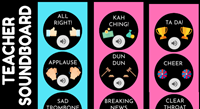Introduction
Two days ago I was at an excellent presentation on the new SAT test. It was at the WIU Mini Conference on Secondary Mathematics Teaching. For the second time in 3 years, I experienced, in one 40-minute presentation, a paradigm shift.
I was very impressed by what I saw with the new SAT. I feel that the new SAT very much reflects the philosophy of the Common Core authors, while at the same time creating a realistic assessment instrument. (I would welcome those that would argue against either claim.)
Here I’ll make some observations about the new SAT and comment on how I want to adjust my teaching.
I think the new SAT expects students to: (show the following important characteristics of successful mathematics students):
- Make sense of problems and persevere in solving them,
- Reason abstractly and quantitatively (in particular, the decontextualize and recontextualize process for word problems),
- Apply, and model with, mathematics.
Quick aside on assessment: The College Board (who produces the SAT) has the advantage of the ‘second golfer to putt on the green.’ (If you putt second, you can watch, and learn from, how the ball broke for the first putter.) The PARCC test also reflected the philosophy of the CCSS, but they tried to ‘create the perfect storm,’ from an assessment point of view. Assessment is very difficult! The PARCC test (which I support, from a philosophical point of view), to a large extent has crashed and burned. Mathematically, it’s OK, but their expectations, from an assessment point of view, were unreasonably too lofty.
SAT Design
The SAT is designed to measure the essential ingredients for college and career readiness and success.
Emphasis
Much of what is emphasized on the new SAT is applications* of important fundamental concepts from middle school and elementary algebra (as we see in what follows). *There is an emphasis on multi-step word problems from real-world contexts. It is useful to look at sample items.
The Page 84 ‘Note’ from the CCSSM (the ‘needle has moved’)
In the appendices of the Common Core State Standards for Mathematics it states:
“…Indeed, some of the highest priority content for college and career readiness comes from Grades 6-8. This body of material includes powerfully useful proficiencies such as applying ratio reasoning in real-world and mathematical problems, computing fluently with positive and negative fractions and decimals, and solving real-world and mathematical problems…”
This is born out in the new SAT. More and more of the mathematics education community (everyone involved with the teaching of mathematics) is understanding this shift of emphasis. I concur.
The (138-word) Description of the SAT Math
Math that Matters Most
The Math Test focuses in-depth on three essential areas of math: Problem Solving and Data Analysis, Heart of Algebra, and Passport to Advanced Math.
Problem Solving and Data Analysis is about being quantitatively literate. It includes using ratios, percentages, and proportional reasoning to solve problems in science, social science, and career contexts.
Heart of Algebra focuses on the mastery of linear equations and systems, which helps students develop key powers of abstraction.
Passport to Advanced Math focuses on more-complex equations and the manipulation they require.
Current research shows that these areas are used in a wide range of majors and careers. The redesigned SAT also includes questions on other topics in math, including the kinds of geometric and trigonometric skills that are most relevant to college and careers. (Learn more about the Math Test.)
I am especially happy to see ratios, percentages, and proportional reasoning.
36 of the 58 questions on the Math Test are are in the Problem Solving and Data Analysis and Heart of Algebra (and 22 questions from other areas and higher math).
Heart of Algebra
- Linear equations
- Fluency
Problem Solving and Data Analysis
- Ratios, rates, proportions
- Interpreting and synthesizing data
Kahn Academy Practice
It was emphasized (in the mini conference presentation) that for the new SAT, the college board is in favor of making preparation materials (including practice items) available for free. They have partnered with Kahn Academy to provide preparation materials.
What I plan to change in my teacher education content courses
I like to start the course with a problem-solving unit. I will continue to so, but the unit will change. The problem-solving strategies I’ll emphasize/teach will be:
- Look for a pattern.
- Look at a similar-easier problem.
- Dimensional analysis (use the units)
- Use multiple steps (use sub-goals)
The problem-solving unit will dovetail directly into the Problems-of-the-Week (POWs).
There needs to be more emphasis on multi-step problems (from real-world contexts).
Extra Info
Multi-step Contextual Problems and PARCC
From the PARCC evidence tables for the Math III test:
“HS.C.CCR Solve multi-step…7-RP.A.3, …8-EE…”
“HS.D.CCR Solve problems using modeling…7-RP, 8-EE, 8-F…”
“F-Int.3 Solve multi-step contextual word problems with degree of difficulty appropriate to the course, requiring application of course-level knowledge and skills articulated in F-TF.5, F-IF.B, F-IF.7, limited to trigonometric functions.” Comments on this at another point.

